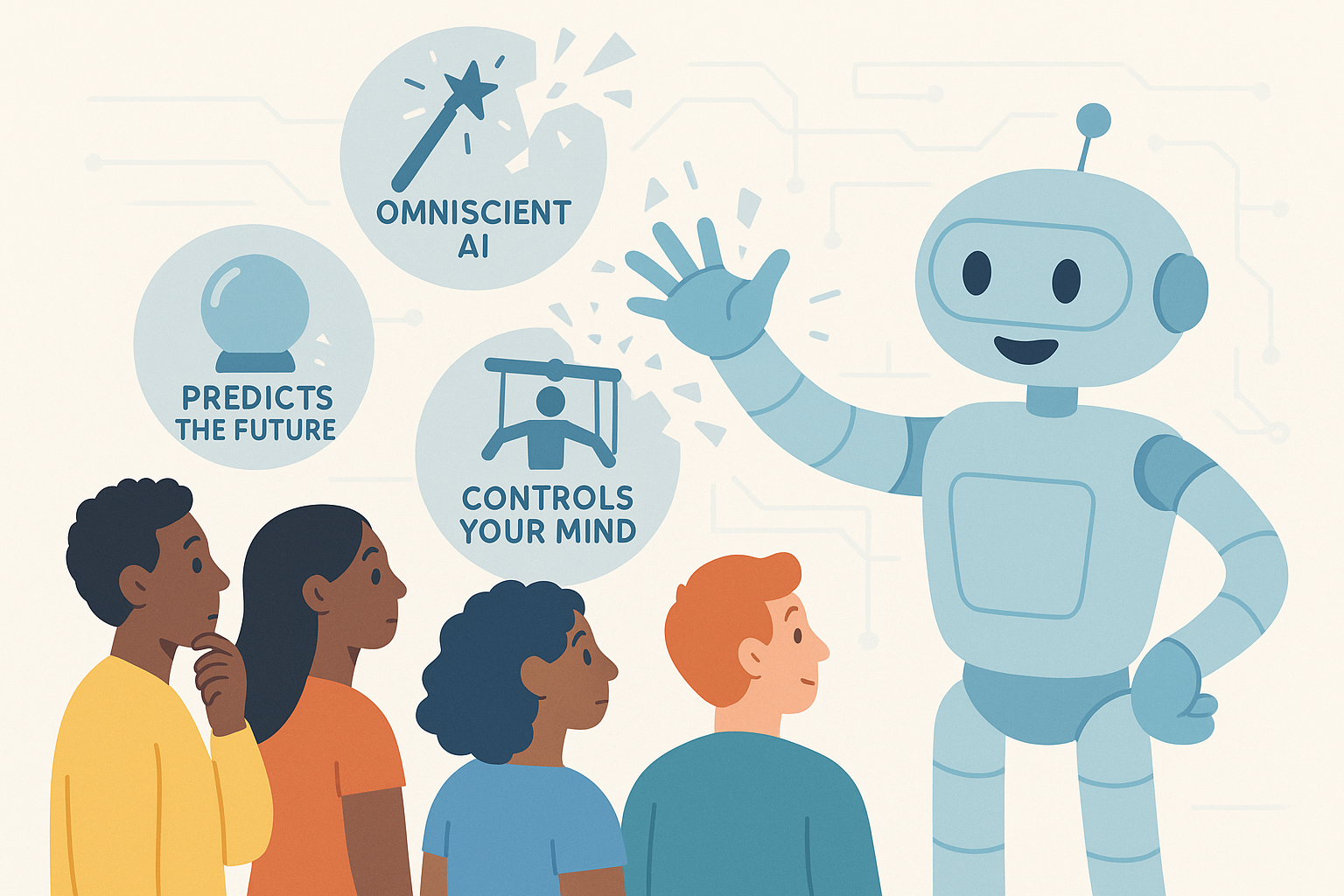AI Myths Busted: What AI Can't *Really* Do (For Beginners)
Demystifying AI for beginners! Learn the truth about what AI can and can't do, avoiding common misconceptions. Embrace AI's power realistically.

AI Myths Busted: What AI Can't *Really* Do (For Beginners)
Artificial Intelligence (AI) is all the rage, and it's easy to get swept up in the hype. But before you start believing AI can solve every problem under the sun, let's pump the brakes. This guide is for beginners, so we'll explore what AI *can't* do, or at least, can't do *reliably* yet. Understanding these limitations is crucial for using AI effectively and avoiding disappointment.
Myth #1: AI is Always Right
Reality: AI is only as good as the data it's trained on. If the data is biased, incomplete, or just plain wrong, the AI's output will be too. This is known as algorithmic bias. Think of it like teaching a child – if you teach them incorrect information, they'll repeat it.
Example: An AI used for hiring might discriminate against certain groups if it's trained on historical hiring data that reflects existing biases.
Myth #2: AI is Creative Like Humans
Reality: AI can generate content, art, and music that *appears* creative, but it's mostly remixing and recombining existing patterns. It lacks genuine understanding, emotion, and the ability to create truly original ideas from scratch.
Example: AI can write a poem in the style of Shakespeare, but it doesn't understand the themes or emotions behind the words in the same way a human poet does.
Myth #3: AI Will Replace All Jobs
Reality: While AI will undoubtedly automate many tasks and change the job market, it's unlikely to replace all jobs. Many roles require uniquely human skills like critical thinking, emotional intelligence, creativity, and complex problem-solving.
Example: AI can assist doctors with diagnoses, but it can't replace the empathy and bedside manner that patients value.
Myth #4: AI is a General Intelligence (AGI)
Reality: Current AI is mostly narrow or specialized. It excels at specific tasks, like image recognition or natural language processing, but can't perform a wide range of tasks with human-level intelligence. AGI, or Artificial General Intelligence, is the holy grail of AI research, but it's still largely theoretical.
Example: An AI that can play chess brilliantly can't drive a car, write a novel, or understand sarcasm.
Myth #5: AI is Effortless to Implement
Reality: Implementing AI solutions often requires significant effort, including data preparation, model training, testing, and ongoing maintenance. It's not a magic bullet that solves problems with the flip of a switch.
Example: Building a chatbot that provides accurate and helpful customer support requires a lot of work to train it on relevant data and handle a wide range of customer inquiries.
Myth #6: AI Doesn't Make Mistakes
Reality: AI systems make mistakes. These mistakes can sometimes have harmful consequences. It is crucial to understand and identify biases and limitations in AI systems to prevent negative consequences.
Example: A self-driving car might misinterpret a traffic sign, leading to an accident. Or a facial recognition system might misidentify someone, leading to wrongful arrest.
So, What Can AI *Actually* Do?
Despite these limitations, AI is still incredibly powerful and useful. It can:
- Automate repetitive tasks
- Analyze large datasets to identify patterns
- Personalize user experiences
- Improve efficiency and productivity
Automate Your Workflow with AI (and Make.com)
One of the best ways to leverage AI's capabilities is by integrating it into your existing workflows. This can be done using automation platforms like Make.com. Make.com allows you to connect different apps and services, including AI tools, to automate tasks and streamline your processes. For example, you could use Make.com to automatically analyze customer feedback using AI, generate reports, and send them to your team. By automating these tasks, you can free up your time to focus on more strategic initiatives.
Final Thoughts: Embracing AI Realistically
AI is a powerful tool, but it's not a perfect solution. By understanding its limitations, you can use it more effectively and avoid unrealistic expectations. Embrace AI's potential, but always approach it with a critical eye and a healthy dose of skepticism. Remember to focus on integrating AI to enhance human skill, not replace it entirely!
Frequently Asked Questions
What are the biggest misconceptions about AI?
Many people believe AI is always right, can replace all jobs, or is effortless to implement. These are myths! AI has limitations and requires careful planning and execution.
How can a beginner use automation platforms like Make.com to benefit from AI?
You can use Make.com to connect different apps and AI services to automate tasks like data analysis, content generation, and reporting, saving you time and effort.
Is it difficult for someone new to AI to understand its limitations?
Not at all! Focusing on what AI *can't* do, like understanding context or eliminating bias, is a great starting point for beginners to develop realistic expectations.
Can AI create truly original ideas?
Currently, AI generates content by recombining existing patterns. While it can mimic creativity, it lacks the genuine emotional understanding and originality of human creation.
Affiliate Disclosure: Some of the links on this site are affiliate links. I earn a small commission if you make a purchase through them—at no extra cost to you. Thank you for your support!